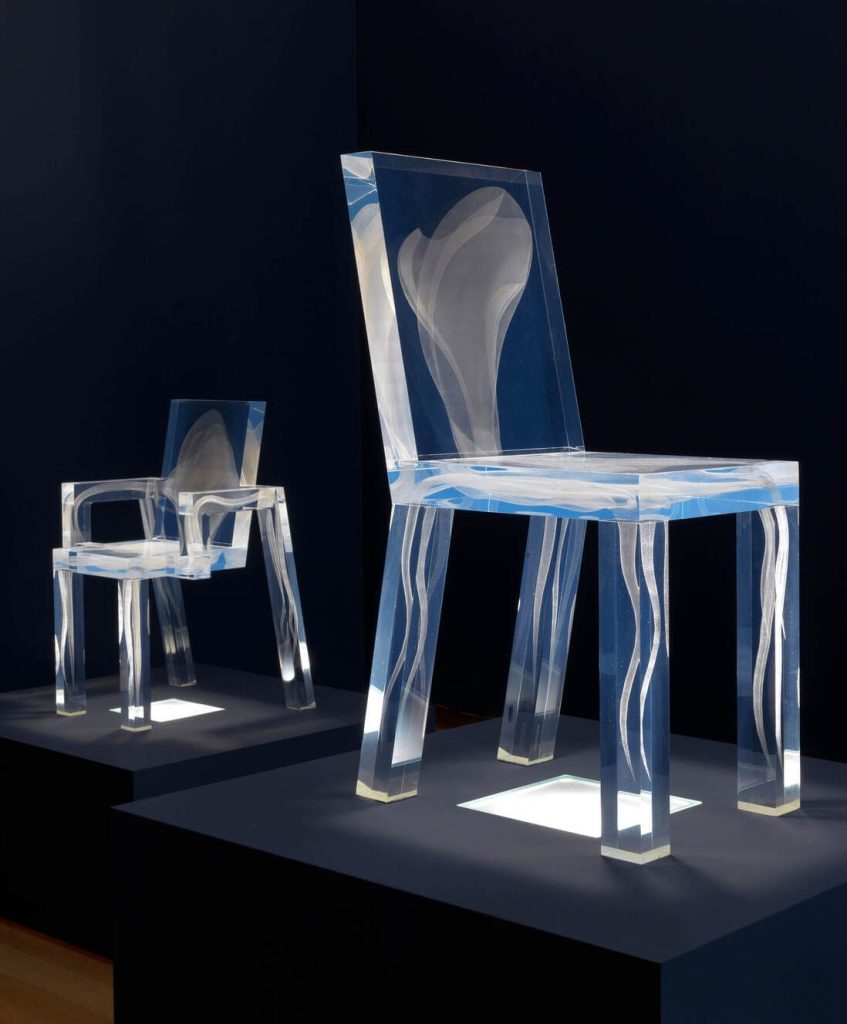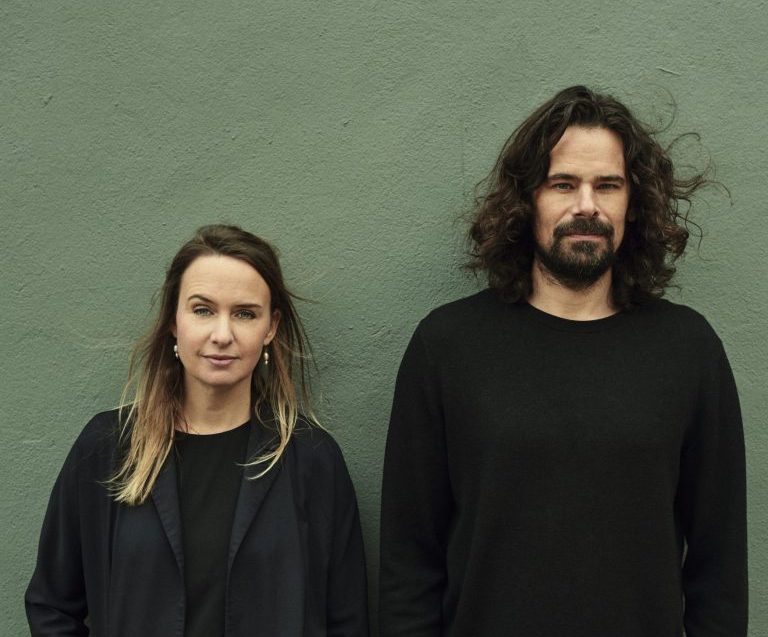
Ghost chair, 2018
Photography by GERT JAN VAN ROOIJ

Fragile Future III, 2019
Exhibited around Andrea Mantegna’s 1506 painting San Sebastian as part of the exhibition Dysfunctional
Courtesy of CARPENTERS WORKSHOP GALLERY
Lonneke Gordijn and Ralph Nauta form DRIFT, a studio with offices in Amsterdam and New York, that works on experiential sculptures, installations, and performances. Their work masterfully combines theatricality and technology, emotions and logic. Hube met with Ralph Nauta to ask him about the duo’s relationship with the future, time, and virtual reality.
hube: Let us begin with one of the works we saw in your studio many years ago, Dandelight. A fragile metaphor for the future. We remember being surprised not only by the impeccable aesthetics of this work, but also by its synthesis of the organic and inorganic. It felt like looking into the future. In this context, we’d like to ask what your relationship with the future is?
Ralph Nauta: Our relationship with the future is one of concern and one of hope. We believe that in the future, everything is possible. We believe in good outcomes: the power of humans, the power of ideas, the power of nature. We believe that nature will always survive. Our vision of the future aligns with the way nature moves—like rivers and flocks of birds. We think finding a movement for everybody on Earth is our biggest challenge. If we learn from nature, we will be able to do that. But how do we bring everybody together? How do we get everybody aligned to think about the bigger picture? That’s the biggest challenge.
h: The aesthetics of your work fascinates your audience. We’ve witnessed this first-hand. Do you think such beauty creates a barrier between form and idea? How do you find a balance between the external and internal in your works?
RN: For us, the works that we make have to feel and look logical. We try to make them as simple as possible. Everything that is used to make the design is part of the design. A lot of people want to hide electronics, mechanics, and technology. They want you to believe that without them the object or artwork would do whatever it needs to do. But for us, technology is a part of the artwork. You’re not looking at a piece of technology, you’re looking at a piece of art where technology is present. But it doesn’t draw your attention, it’s just part of the aesthetics. This comes quite naturally to us; we have never wanted the technical aspects of our work to take the leading role. For us, it’s about how we communicate with our audience. This communication is always through movement. It’s about how the work moves. How we choreograph it is how we tell a story. So, the content is very emotional. The visual movement opens up a space, not in our brains, but in our hearts. We like to establish a dialogue of feelings and emotions between the audience, the space, and the artwork. That is what it’s about, that is how it will move people, how it will change people, how it will change the energy in the space. That is what matters to us.
h: In the 20th century, time and movement became part of visual art. Before this time, art consisted mostly of static images—paintings, sculptures. It captured the moment, but not the time or movement. How do you define your relationship with time?
RN: Well, as we mostly work with movement, time and timing is everything. Within time something changes, and something happens. It’s not a still moment, it’s about the ongoing nature of the moment. We live in a time overwhelmed by information. Everything and everyone is vying for our attention. Wherever you go, you’re being hounded by information. And what we want to do in our work is remove all of this noise to bring you closer to feeling. Because a lot of the visual and verbal content that we digest activates your brain but it doesn’t necessarily activate your heart or your feelings. So, what we want to do is connect people with their feelings and their hearts. We want to allow them to connect through the movement that we bring into space. These movements dictate a rhythm that is very personal and relaxing. We encourage the viewer to adapt to this rhythm and to become calmer. To check in with themselves and how they feel.
h: In art and design, the debate about pure aesthetics and utilitarianism will continue for a very long time. Can a work simply be beautiful?
RN: Wow, what a question. For us, a work can simply be beautiful, but there is always more to it. Because then there is the next question, why do we find this work beautiful? What does it trigger in us? We think beauty is a sense of calm, it is where things are aligned, where things are equal, where the fight is out. It’s where no compromises are made and where everything reaches its full potential. So, there is never simply beauty. There is so much more behind it. We are definitely interested in why certain objects or pieces of art are considered beautiful, because it’s never a simple answer. It is always related to something else—a memory or an experience. So, we don’t believe in something being simply beautiful. There is always more to it.
h: The idea of paradox or magic (as in your work Drifter in which a concrete cube levitates) sends our imagination to fantastic worlds, to the borders of new realities—maybe even to the metaverse. Have you thought about such digital worlds and the metaverse? If you have, what do these new worlds mean to you, and do they impact on your creative vision?
RN: We don’t have a lot of experience in the metaverse, but during the early stage of the pandemic, there were a lot of conversations going on about the metaverse/ What we find interesting about it is that new and different societies can be built thereby the users. We find the templates being used to build these societies, the ideals are people trying to create, and the behaviour of their avatars fascinating. In the metaverse, can we overcome who we are? We see the metaverse as an opportunity to test out new realities and see if they function, but without large scale consequences. Because if it doesn’t work, everybody can just leave that part of the metaverse, right? We think we should use the metaverse as a test case, a space to explore who we truly are as humans and what we need to change in order to be successful in the future.
Does it [the metaverse] impact our creative vision? No, it doesn’t. Because our creative vision is very much about the physical reality that we live in. We want to connect people in physical realities. We use a lot of digital technologies, but we don’t want to keep people in the digital, we want people to be in reality. In the digital world, so many things are possible, but it’s what we do in the real world that will define our future. We find it far more interesting and challenging to deal with real resources, materials, and stakeholders, and to navigate through that. It is basically an adventure, a game of how you use your time.

